How to connect an RCD in an apartment without grounding: analysis of schemes and step-by-step instructions
The current construction standards are designed to take into account a significant amount of electrical equipment that equips housing. In view of this, the protection of owners from possible electric shock is an important requirement. One of the main roles in the organization of an effective barrier is the protective shutdown device.
We will tell you how to connect an RCD in an apartment without grounding. In our article, we describe in detail the tested in practice schemes for assembling electric networks with a protective mechanism. Independent home masters with us will find assembly instructions.
The content of the article:
The need for grounding RCD
It is believed that the faultless functioning of the residual current device is achieved only if there is an electrical network with a phase contact conductor, a zero conductor and a ground bus.
In fact, if we consider the operation of the RCD and the grounding bus, both devices are functionally designed to perform similar actions - to de-energize the circuit in case of leakage of electricity to the case. The difference is noted only in the circuit principle.
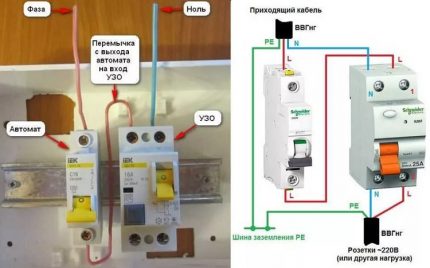
A logical conclusion follows from here: both circuit solutions are applicable in the practice of power supply to a home. Moreover, the option of joint use of these two circuit solutions seems to be optimal.
If an RCD is installed on the power supply line, the organization of grounding, by and large, is permissible to exclude. At the same time, the introduction of a protective device seems to be a reasonable solution for a two-wire power network, where the grounding bus is technically absent.
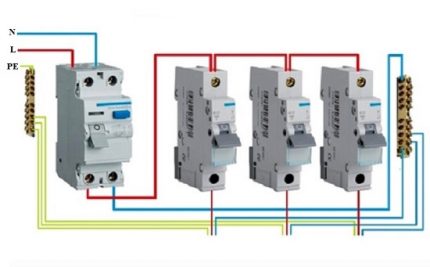
Actually, if you examine yourself carefully RCD device, it will not be possible to find the terminals specifically designed for connecting the "ground".
This factor confirms once again the possibility of switching on without grounding. However, modern homebuilding projects without fail require a grounding bus.
How does a protective device function without ground?
The connection option without grounding is a typical case for apartments and private houses of old buildings. Power supply to such buildings is usually organized without supplying a grounding bus. But how correct should one expect the operation of an RCD without turning on the "ground"?
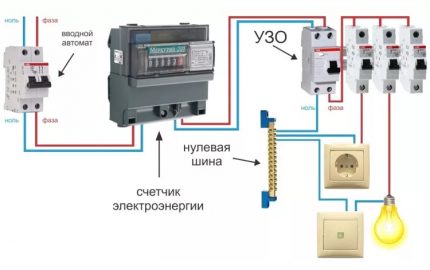
For example, during the operation of electrical equipment, a breakdown occurred on the housing. In the absence of a grounding bus, count on instantaneous operation established RCD don't have to. If a person touches the body of the punched equipment, the leakage current will flow to the "earth" through the human body.
It will take some period of time (the threshold for setting up the device) until the RCD trips. For this period of time (rather short), the risk of injury from exposure to electric current remains quite acceptable. Meanwhile, the RCD would work immediately if there was a grounding bus.

In this example, it is easy to deduce the conclusion that connect RCD and automatic machines in the apartment panel or the shield of a private house should always be with the connection to the ground bus. Another question is that there remains a sufficient number of buildings where there is no way to do this due to the lack of "land" in the project schemes.
For variants of buildings where the power supply is organized without grounding, the device for switching protection by means of an RCD actually looks like the only effective means of protection that can be applied in such conditions. Therefore, we consider possible schemes applicable to private housing electricity.
RCD connection diagrams without grounding
One of the traditional circuit solutions where an RCD protective device is used is the option of installing the device directly at the input of power supply to the structure of the object. That is, the residual current device is mounted immediately after the electricity meter.

This approach provides protection of the electrical wiring of the house in full, which means that the current leakage of any household appliance is monitored. From the mains voltage is supplied by a cable to a device that combines two phase and two zero terminals in one case (there are also three-phase devices).
These two pairs of terminals are divided into input and output. A phase line passes through one pair, and a zero line through another. After completing the wiring according to this scheme, then additional machines are installed for each type of load.
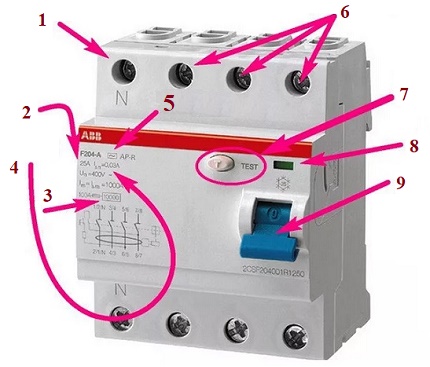
The advantage of this circuit design is to save on electrical equipment. Only the installation of one device successfully resolves the issue of protection.However, on the other hand, if an object of current leakage appears in the home network, there is a complete blackout of the house.
For some cases, this situation may become inappropriate. To some extent, the comfort component for property owners is reduced. A similar drawback can be solved with the help of another circuit solution - more functional in terms of sectional disconnection.
Enabling RCDs with Advanced Functionality
A slightly different circuit design involving introduction of RCD for each individual branch of power supply, allows you to make the protection more “soft” in relation to the power lock.

Several protection devices are used here, depending on the number of branches of the electrical apartment network.
For example, if there are two branches, the scheme will look like this:
- Installation of one RCD is similar to the first option - at the entrance.
- Installation of subsequent RCDs after selectively installed machines network branches.
- On each branch line protection by the number of consumers.
With this construction of the circuit, voltage control and cutoff is carried out with respect to a separate branch of the home wiring. Therefore, the fact of current leakage recorded on a separate line will lead to blocking only the network section on which the punched load is connected. The remaining sections will remain in working condition.
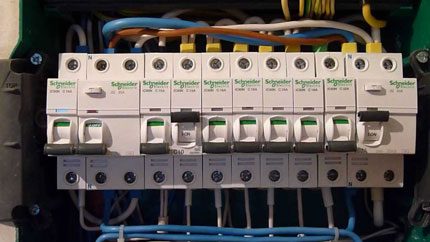
But with a more functional solution, it can’t do without certain disadvantages. It is clear that with an increase in the number of devices it will be necessary to expand switchboard. Increasing the size of the switchboard can also be a problem for the user. In addition, from a financial point of view, the choice of using the noted scheme is also not entirely successful.
Costs will be almost a double increase compared with the first option. True, if you are already thinking about effective full-featured protection, saving is not recommended.
The nuances of connecting in private households
Private buildings differ from municipal housing apartments significantly. First of all, the use of equipment that is never used in apartments. For example, the traditional equipment of a private household are heating electric systems or an electric heating module of the bath.
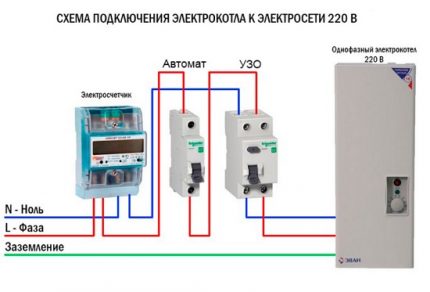
For any of these systems, a protective shutdown is required, since this is not just household appliances, but rather powerful technological equipment. Here, the RCD is not just protection against current leakage to the housing, but also performs the function of a fire protection device.
For such projects, the TT system circuitry is often used, which provides relative safety for cases of leakage of currents to the equipment case.

The addition of such a circuit with a safety interlock device enhances the degree of reliability. However, the TT system requires an earth bus.
Step-by-step instructions for implementing protection
For complete information regarding the connection of devices providing a protective cut-off, we will consider step-by-step the process of creating a communication circuit with the introduction of a protection device:
- Bring to electrical panel power cable from a centralized interface for entering energy into a house.
- Install a circuit breaker inside the switchboard (this device is preliminarily calculated for cutoff according to the total load of the network).
- Mount the electric meter in a convenient place and connect the output of the machine with the input terminals of the meter.
- Install an RCD inside the switchboard and connect the input of the device (upper terminals) with the output terminals of the meter.
- Connect the phase conductor of the home electrical wiring to the output (phase) terminal of the RCD.
- On the output (zero) terminal of the RCD, connect the neutral conductor of the home electrical wiring.
- Connect the main cable to the terminals of the input circuit breaker.
Performing the indicated operations, some nuances should be taken into account. For example, it is necessary to follow the rule of sequentially closing a circuit breaker with a safety cut-off device.
If it is not intended to introduce the machine into the network, it is imperative to install fuses instead of the machine.
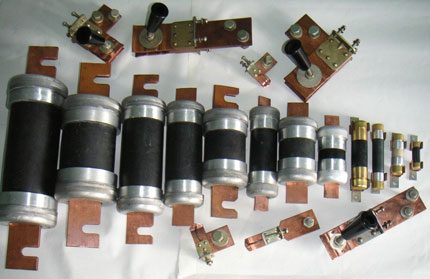
As a rule, it is recommended to take the value of the rated current of the protective module slightly larger than the current value of the circuit breaker. In some cases, this parameter can be selected equal to the parameters of the machine.
When carrying out work on including a protective device in the supply network, it is recommended to check all available circuits for possible defects. After installing the device check cutoff efficiency. For this operation, there is a special test key on the front panel of the device.
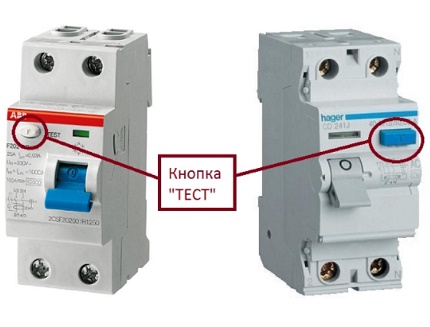
During installation, all connection work must be carried out carefully.
The supply of network lines should be carried out in strict accordance with the designations present on the device. That is, the phase is connected to the "phase" and, accordingly, zero is connected to the "zero". From a change of place of the “terms” there is a high risk of failure of the protective apparatus.
Conclusions and useful video on the topic
This video completes the article about devices used as protective systems for electric networks, equipment and users of apartments and private houses. Survey material with all the subtleties of use, which will certainly come in handy for practice.
Connecting an RCD without grounding in modern apartments is not only not recommended, but also prohibited. If there is a need to install equipment in the electrical panel, be sure to contact the master servicing the house. All work regarding the filling of the general apartment shield should be performed by a qualified specialist.
Tell us how you connected the residual current device to interrupt the power supply in the event of a dangerous situation. It is possible that your tips will be very useful to site visitors. Please leave comments in the block below, post a photo, ask questions.

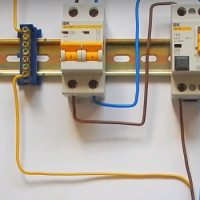 How to connect a differential machine: possible connection schemes + step-by-step instructions
How to connect a differential machine: possible connection schemes + step-by-step instructions 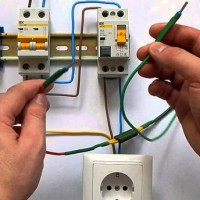 Rules for connecting an RCD to a single-phase network without grounding: the best schemes + operating procedure
Rules for connecting an RCD to a single-phase network without grounding: the best schemes + operating procedure 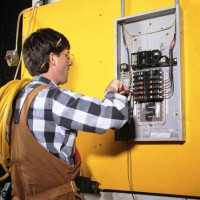 How to connect an RCD: circuits, connection options, safety rules
How to connect an RCD: circuits, connection options, safety rules 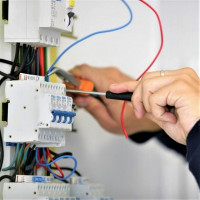 DIY electrical panel exclusion: current diagrams + detailed assembly instructions
DIY electrical panel exclusion: current diagrams + detailed assembly instructions 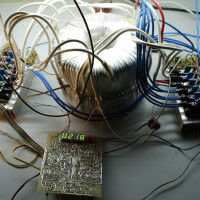 Powerful do-it-yourself voltage regulator: circuit diagrams + step-by-step assembly instructions
Powerful do-it-yourself voltage regulator: circuit diagrams + step-by-step assembly instructions 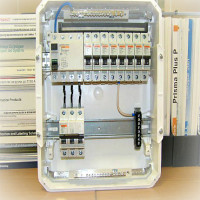 Features of connecting automatic machines and RCDs in the shield: circuits + installation rules
Features of connecting automatic machines and RCDs in the shield: circuits + installation rules  How much does it cost to connect gas to a private house: the price of organizing gas supply
How much does it cost to connect gas to a private house: the price of organizing gas supply  The best washing machines with dryer: model rating and customer tips
The best washing machines with dryer: model rating and customer tips  What is the color temperature of light and the nuances of choosing the temperature of the lamps to suit your needs
What is the color temperature of light and the nuances of choosing the temperature of the lamps to suit your needs  Replacement of a geyser in an apartment: replacement paperwork + basic norms and requirements
Replacement of a geyser in an apartment: replacement paperwork + basic norms and requirements
There was a recent situation. My brother and I went to earn some money, and I had to live, as always in such situations, in the trailer. So, we were told ourselves to completely connect all the wiring and toss RCDs to it, and also toss them to the switchboard ourselves. Well, they did everything, but the grounding system had to be made of a steel bar driven into the ground. Then we also set the counter ourselves. So, there is nothing particularly complicated here.
Good afternoon, Alexander. It’s really not difficult to assemble a shield, to drive in an earthing switch. Difficulties are calculations of wire cross-sections, the required number of grounding conductors, grounding conductors, the selection of machines, RCDs.
It will be, I think, a surprise for you that a single clogged bar may not be enough. The reason is banal - it will not provide a “smooth” decrease in potential when a short circuit current flows through it. The consequences - the defeat of a person located near your pin, "step voltage". I’ve attached a picture explaining the essence of the issue.
By the way, the grounding you built is subject to testing - if the resistance to current spreading is more than the norm, the device is dangerous. PUE devotes a dozen pages to grounding - read chapter 1.7.